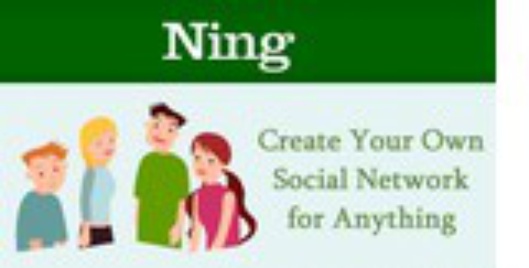Hi5, gaydar.fr, Ning, MySpace and co.
Published on
Translation by:
 Lucy Davies
Lucy Davies
With one login in and a few clicks, virtual communities are promising many marvellous things. Meet kindred spirits, find a job or customise your universe

Find a job on Linkedin
The philosophy of 'Linkedin' is summed up in one phrase, declared on their website: ‘your professional relations are the key to your success’. Linkedin, created by Dan Nye in 2003 in California, is a professional platform where internet users can look for a job, recruit an associate or establish business partnerships. This database first exploded on to the scene in the area of high-technology but it now covers almost all sectors. Since then, financed by a number of European investors, the site now attracts 15 million subscribers (as of October 2007).
Make friends on Hi5
 Hi5’s objective is to allow users to communicate with existing friends all over the world and also to make new ones. The counter posted on the site shows almost 60 million members who want to be ‘connected’. One of Hi5’s biggest assets is also one of its worse downfalls: unlimited photo albums. The result: A kind of visual onslaught of vanity. Hi5 features on the list of the 25 most consulted websites in the world and is currently the most popular in Portugal.
Hi5’s objective is to allow users to communicate with existing friends all over the world and also to make new ones. The counter posted on the site shows almost 60 million members who want to be ‘connected’. One of Hi5’s biggest assets is also one of its worse downfalls: unlimited photo albums. The result: A kind of visual onslaught of vanity. Hi5 features on the list of the 25 most consulted websites in the world and is currently the most popular in Portugal.
Reveal your true feelings and possibly more... on gaydar
What you want, when you want it. Gaydar.fr's catchphrase. This is one of the largest online lesbian, gay and bisexual communities. Its members have nothing to hide. They create online profiles and share their quests for romance and pleasure, just like Badger (a pseudonym) for example, a 26 year old male who has just returned to Madrid after finishing his Erasmus year in the UK. For him, the great advantage of being a member is that 'behind a computer there are no taboos. You can make up stuff, but you can also be really honest.' Gaydar, available in eight languages, was created in 1999 by South Africans Gary Frisch and his partner Henry Badenhords.
Show off your talent on Myspace
Myspace, founded by Tom Anderson and Chris DeWolfe in August 2003, is now the most visited site in the US and boasts a community of 140 million users from all corners of the world. With the catchy slogan see who knows who or how you are connected. Find out if you really are six people away from Kevin Bacon, Myspace has since become a sort of virtual breeding-ground for artists. Through an interactive network equipped with blogs, profiles, photos and an internal system of e-mails and forums, this site allows users to put their artistic creations online and to post their own musical compositions at the same time as searching for works they like.
 The problem for Myspace, bought out for 580 million dollars in 2006 by News Corp (the media tycoon Rupert Murdoch’s empire), and valued today at almost 6 billion, is intellectual property rights, particularly with regards to the legislation concerning the rights of the author. In May 2006 Universal Music pressed charges, arguing that Myspace allows users to publish their songs illegally. At the present moment the site forbids the 'posting, modifying, distributing or reproduction in any way of copyrighted material, trademarks, or other proprietary information belonging to others without the prior written consent of the owner of such proprietary rights.'
The problem for Myspace, bought out for 580 million dollars in 2006 by News Corp (the media tycoon Rupert Murdoch’s empire), and valued today at almost 6 billion, is intellectual property rights, particularly with regards to the legislation concerning the rights of the author. In May 2006 Universal Music pressed charges, arguing that Myspace allows users to publish their songs illegally. At the present moment the site forbids the 'posting, modifying, distributing or reproduction in any way of copyrighted material, trademarks, or other proprietary information belonging to others without the prior written consent of the owner of such proprietary rights.'
Create your own network on Ning
12 years after creating Netscape, Marc Andreessen is going to announce the raising of funds to the tune of 44 million dollars for Ning, an ambitious platform intended to present an alternative to ‘all-in-one’ social networks by making available free tools to create personalised communal sites. The novelty lies in offering people the chance to create their own public or private universe.
Ning not only gives users, even inexperienced ones, online control of the sites but also the capacity to create new web applications, to modify the appearance of the interface and likewise be in command of advertisements. Users can watch videos, create slide shows, listen to music, start their own blog or simply network. Ning is perhaps heralding the very beginning of the 2nd generation of social networking sites, capable of being customised to the users’ wishes.
Who clicks where?
169, 000 000 Europeans are online
48, 000 000 of them are regular internet users
Six out of ten Europeans go online regularly
5.4 connections a week are made on average
by Europeans
11 hours 20 minutes is the average time spent online per week
70% of time spent online is personal use, the remaining 30% of time is professional use
25% of French internet users visit a blog at least once a month
43% of Swedish internet users listen to online radio
64% of Spanish users use instant messaging applications
82% of young people aged between 16 and 24 prefer internet to TV
80% of those asked agreed that they “couldn’t live” without at least some online activity
42% of users communicate at least once a month using social networks
30 % The increase in visits to online forums in 2006
87% of users consult the internet to find out information
81% of Europeans dedicate their time spent online to checking their emails
80% surf using broadband connections
These figures concerning the use of the web by Europeans in 2006 were published in the format of a survey 'Mediascope Europe’, undertaken by the EIAA (European Interactive Advertising Association)
In-text photos: LinkedIn (Jerry Curk/ Flickr) ; gaydar (Moyan Carpenter/ Flickr), Ning (destinetics/ Flickr)
Translated from Dis moi où tu surfes, je te dirais qui tu es


